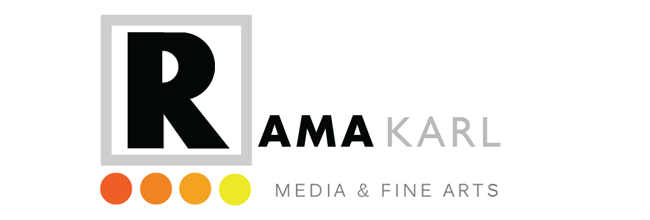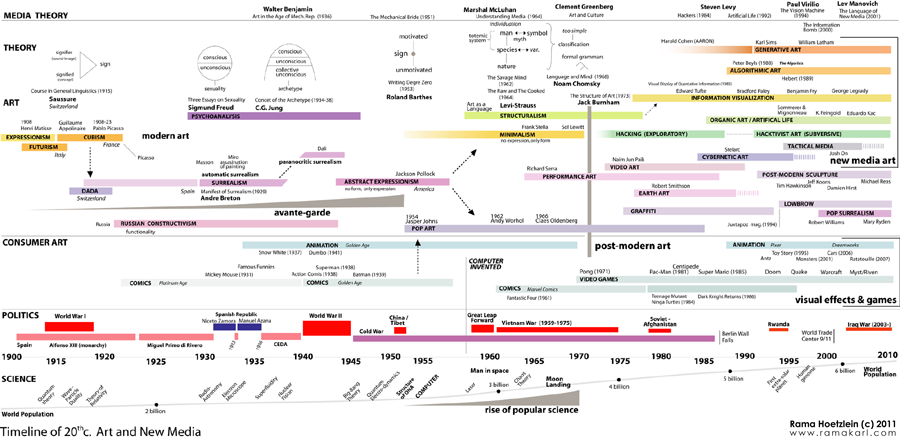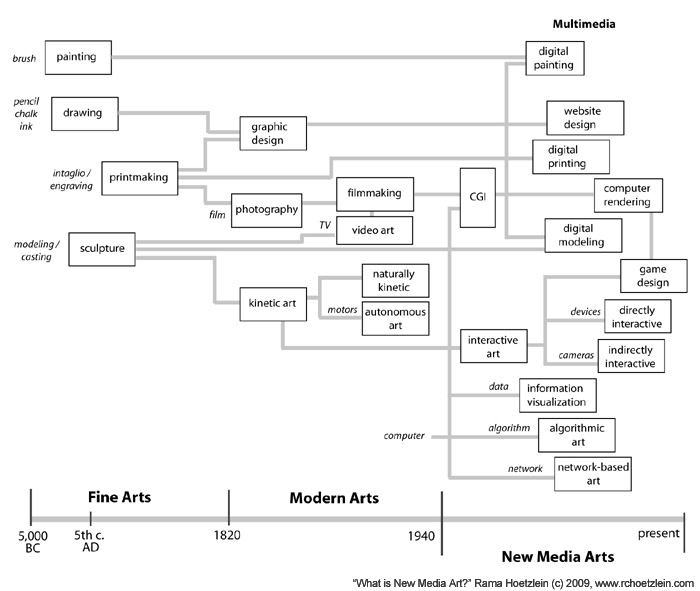A Film Viewing List for Contemporary Artists
The following is a collection of what I consider to be required viewing for the contemporary artist. These films are not just about art, but many are documentaries that reflect some important aspect of modern society As the first role of the artist is to relate to society the films here are intended as an enjoyable trip to reveal the complexity, depth, and paradox of life in the 20th century.
1. Exit Through the Gift Shop
A fresh look at the transition from graffiti to street art, this documentary by internationally unknown artist Banksy reveals work by the filmmaker Thierry Guetta. It shows how street art established itself as an outcome of graffiti, and was then temporarily imploded by Mr. Brainwash.
2. Collapse
Directed by Chris Smith, this dark documentary about Michael Ruppert looks at the oil crisis and global economic collapse in a new way. Not widely seen, it has been interpreted as a character study of Ruppert’s social theories, but in some ways represents a very broad, encompassing – compassionate? – look at human life.
3. Stranger than Fiction
A 2006 comedy-drama written by Zach Helm (starting Will Farrell, directed by Marc Forster), this film is a pleasurable example of self-reference in writing and post-modern filmmaking. Never fun for the writers, we can take comfort in the fact that writers are out there sweating, so that we can find our humanity once in a while.
4. Curse of the Jade Scorpion
Of course, you should have already seen Woody Allen’s magnum opus Annie Hall (1987). Not highly acclaimed, I recommend Curse of the Jade Scorpion instead for other reasons. Its nice to see Woody Allen fail by independent means other than his own. This is an enjoyable film, and in some ways gets at the difficulties of romance despite itself.
5. Kiss Kiss Bang Bang
Ok, I haven’t actually seen this film. I have wanted to again and again, but couldn’t find it!. Currently I’m living in Denmark, so its pretty much impossible to get. Once I do see it, and I hope you do to, then I’ll put in a proper review.
6. Dead Men Don’t Were Plaid
This film and LA Story are my two favorites by Steve Martin. Unfortunately, many of his recent films have the Hollywood stamp, but back in the day Steve Martin was a master of creative thinking in acting. Dead Men Don’t Were Plaid is a retrospective parody of film noir at its best, splicing Steve Martin into old films while maintaining some kind of plot.
7. The Wonder Boys
There are few films that are about post-modern writing and literature in all the right ways – this is one of them. This film combines the humor, paradox, horror, and tragedy of contemporary literature. The number of interesting references in this film, that only a writer would know, is enough to create a whole new reading list.
8. District 9
This is the only science fiction film on the list. Why? Because its very hard to find science fiction that does any true merit to the literary genre. Somehow science fiction films have gone on a tangent from the Golden Age of science fiction (if in doubt, read Frederik Pohl, Orson Scott Card, Robert Heinlein, Frank Herbert). Just as Ender’s Game is the one book that delivers everything you ever wanted in a science fiction novel, District 9 is perhaps the only sci.fi. film that does the same. Gritty, horrific, but this is not a horror movie – it is a movie about human spirit, change, and passion – what science fiction writing was always about.
9. Man on Wire
As this list should be revealing, art is passion. Passion means taking risks, going out on a wire, and doing things no one else will. Man on Wire is a documentary film by James Marsh about Philippe Petit, the French rope-walker who traversed between the Twin Towers. What does it take to be an artist? Although it may not be so physically dangerous, sometimes the most deeply felt benefits are when art challenges the self.
10. Bo Burnham: Words, Words, Words
With the decline in education, the rise in population, and globalism, I was once very worried that all the great artists would get old an die – Who would replace them? When George Carlin passed away in 2008, I wondered, how can life continue without being reminded by him that “The Earth will do just fine without us. Its not going anywhere; we are.” I am pleased to say that Bo Burnham has rekindled my faith in humanity, not because he’s human, but because his humor is so stream-of-consciousness that it is inexplicably rich with feeling — and at age 19.
11. The Pixar Story
Any modern artist must deal with the tension between consumer art and cultural art. Consumer art is what you thought was art in high school: video games, animated films, the Matrix. The defining feature of all of these is that their sole, crowning purpose is to make money. The Pixar Story is a revealing, inside story of exactly how this was accomplished with modern technology. Any thing is art, so we can’t deny the beauty of films like Ratatoullie, or the emotions they bring to us. But for the cultural, academic or avante-garde artist the work itself, the social message, is placed above monetary value. This tension of survival is central to art, and The Pixar Story shows one side of the coin.
12. Thirty-Two One Act Plays about Glenn Gould
An investigation into Canadian pianist and master of musique concrète radio documentaries, Glenn Gould, this film is not just a documentary but a visual and musical work of art itself. Each act captures an emotion in vivid detail and puts it to life with music. The emotions are sometimes classical, sometimes modern, and sometimes deconstructive, as Glenn Gould himself was.


